Staying Active at Any Size
On this page:
- Can anyone be active?
- Why should I be active?
- What do I need to know about becoming active?
- What kinds of activities can I do?
- Where can I be active?
- How can I get past my roadblocks?
- How can I stick with my physical activity plan?
- Clinical Trials
Physical activity may seem hard if you’re overweight. You may get short of breath or tired quickly. Finding or affording the right clothes and equipment may be frustrating. Or, perhaps you may not feel comfortable working out in front of others.
The good news is you can overcome these challenges. Not only can you be active at any size, you can have fun and feel good at the same time.
Can anyone be active?
Research strongly shows that physical activity is safe for almost everyone. The health benefits of physical activity far outweigh the risks.1
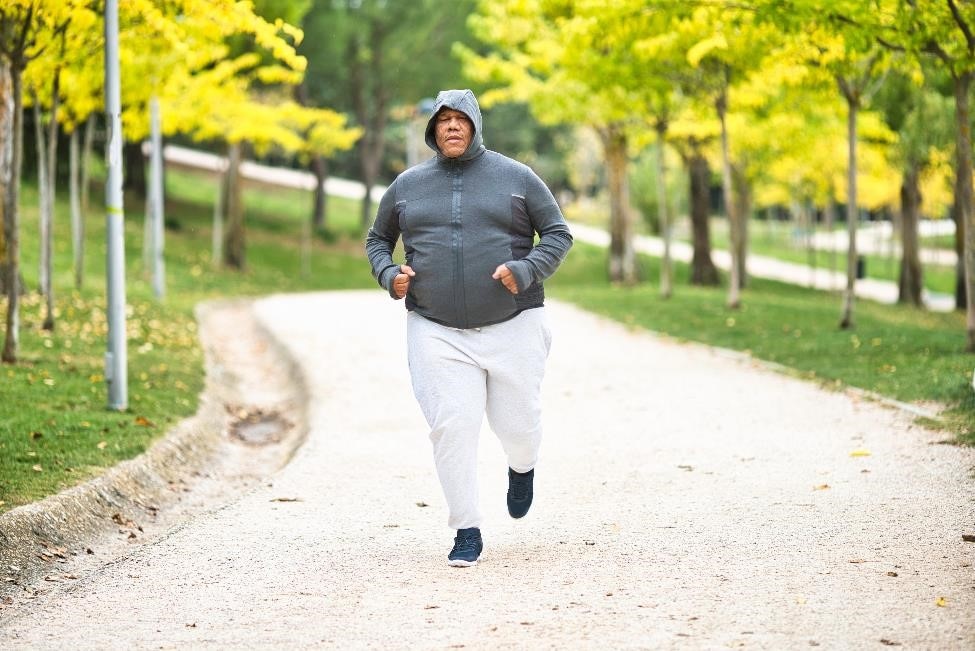
The activities discussed here are safe for most people. If you have problems moving or staying steady on your feet, or if you get out of breath easily, talk with a health care professional before you start. You also should talk with a health care professional if you are unsure of your health, have any concerns that physical activity may be unsafe for you, or have
- a chronic disease such as diabetes, high blood pressure, or heart disease
- a bone or joint problem—for example, in your back, knee, or hip—that could get worse if you change your physical activity level
Why should I be active?
Being active may help you live longer and protect you from developing serious health problems, such as type 2 diabetes, heart disease, stroke, and certain types of cancer. Regular physical activity is linked to many health benefits, such as
- lower blood pressure and blood glucose, or blood sugar
- healthy bones, muscles, and joints
- a strong heart and lungs
- better sleep at night and improved mood
The Physical Activity Guidelines for Americans, 2nd edition (PDF, 14.2 MB) , define regular physical activity as at least 150 minutes a week of moderate-intensity aerobic activity, such as brisk walking. Brisk walking is a pace of 3 miles per hour or faster. A moderate-intensity activity makes you breathe harder but does not overwork or overheat you. You should also do muscle-strengthening activities at least 2 days a week.
You may reach this goal by starting with 5 minutes of physical activity several times a day, 5 to 6 days a week. You could then gradually work up to 10 minutes per session, 3 times a day. If you do even more activity, you may gain even more health benefits.1
When combined with healthy eating, regular physical activity may also help you control your weight. However, research shows that even if you can’t lose weight or maintain your weight loss, you still can enjoy important health benefits from regular physical activity.2,3
Physical activity also can be a lot of fun if you do activities you enjoy and are active with other people. Being active with others may give you a chance to meet new people or spend more time with family and friends. You also may inspire and motivate one another to get and stay active.
What do I need to know about becoming active?
Choosing physical activities that match your fitness level and health goals can help you stay motivated and keep you from getting hurt.1 You may feel some minor discomfort or muscle soreness when you first become active. These feelings should go away as you get used to your activity. However, if you feel sick to your stomach or have pain, you may have done too much. Go easier and then slowly build up your activity level. Some activities, such as walking or water workouts, are less likely to cause injuries.
If you have been inactive, start slowly and see how you feel. Gradually increase how long and how often you are active. If you need guidance, check with a health care or certified fitness professional.
Here are some tips for staying safe during physical activity:
- Wear the proper safety gear, such as a bike helmet if you are bicycling.
- Make sure any sports equipment you use works and fits properly.
- Look for safe places to be active. For instance, walk in well-lit areas where other people are around. Be active with a friend or group.
- Stay hydrated to replace the body fluids you lose through sweating and to prevent you from getting overheated.
- If you are active outdoors, protect yourself from the sun with sunscreen and a hat or protective visor and clothing.
- Wear enough clothing to keep warm in cold or windy weather. Layers are best.
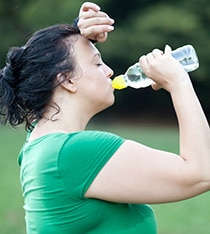
If you don’t feel right, stop your activity. If you have any of the following warning signs, stop and seek help right away:
- pain, tightness, or pressure in your chest or neck, shoulder, or arm
- extreme shortness of breath
- dizziness or sickness
Check with a health care professional about what to do if you have any of these warning signs. If your activity is causing pain in your joints, feet, ankles, or legs, you also should consult a health care professional to see if you may need to change the type or amount of activity you are doing.
What kinds of activities can I do?
You don’t need to be an athlete or have special skills or equipment to make physical activity part of your life. Many types of activities you do every day, such as walking your dog or going up and down steps at home or at work, may help improve your health.
Try different activities you enjoy. If you like an activity, you’re more likely to stick with it. Anything that gets you moving around, even for a few minutes at a time, is a healthy start to getting fit.
Walking
Walking is free and easy to do—and you can do it almost anywhere. Walking will help you
- burn calories
- improve your fitness
- lift your mood
- strengthen your bones and muscles
If you are concerned about safety, try walking in a shopping mall or park where it is well lit and other people are around. Many malls and parks have benches where you can take a quick break. Walking with a friend or family member is safer than walking alone and may provide the social support you need to meet your activity goals.
If you don’t have time for a long walk, take several short walks instead. For example, instead of a 30-minute walk, add three 10-minute walks to your day. Shorter spurts of activity are easier to fit into a busy schedule.
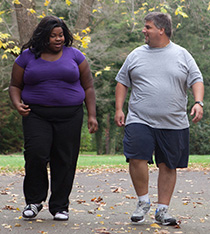
Dancing
Dancing can be a lot of fun while it tones your muscles, strengthens your heart and lungs, and boosts your mood. You can dance at a health club, dance studio, or even at home. Just turn on some lively music and start moving. You also can dance to a video on your TV or computer.
If you have trouble standing on your feet for a long time, try dancing while sitting down. Chair dancing lets you move your arms and legs to music while taking the weight off your feet.
Bicycling
Riding a bicycle spreads your weight among your arms, back, and hips. For outdoor biking, you may want to try a mountain bike. Mountain bikes have wider tires and are sturdier than bikes with thinner tires. You can buy a larger seat to make biking more comfortable.
For indoor biking, you may want to try a recumbent bike. On this type of bike, you sit lower to the ground with your legs reaching forward to the pedals. Your body is in more of a reclining position, which may feel better than sitting straight up. The seat on a recumbent bike is also wider than the seat on a regular bike.
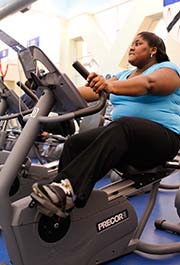
If you decide to buy a bike, check how much weight it can support to make sure it is safe for you.
Water workouts
Swimming and water workouts put less stress on your joints than walking, dancing, or biking. If your feet, back, or joints hurt when you stand, water activities may be best for you. If you feel self-conscious about wearing a bathing suit, you can wear shorts and a T-shirt while you swim.
Exercising in water
- lets you be more flexible. You can move your body in water in ways you may not be able to on land.
- reduces your risk of hurting yourself. Water provides a natural cushion, which keeps you from pounding or jarring your joints.
- helps prevent sore muscles.
- keeps you cool, even when you are working hard.
You don’t need to know how to swim to work out in water. You can do shallow- or deep-water exercises at either end of the pool without swimming. For instance, you can do laps while holding onto a kickboard and kicking your feet. You also can walk or jog across the width of the pool while moving your arms.
For shallow-water workouts, the water level should be between your waist and chest. During deep-water workouts, most of your body is underwater. For safety and comfort, wear a foam belt or life jacket.
Strength training
Strength training involves using free weights, weightlifting machines, resistance bands, or your own body weight to make your muscles stronger. Lower-body strength training will improve your balance and prevent falls.
Strength training may help you
- build and maintain strong muscles as you get older
- continue to perform activities of daily living, such as carrying groceries or moving furniture
- keep your bones strong, which may help prevent osteoporosis and fractures
If you are just starting out, using a weightlifting machine may be safer than dumbbells. As you get fit, you may want to add free-weight exercises with dumbbells.
You do not need a weight bench or large dumbbells to do strength training at home. You can use a pair of hand weights to do bicep curls. You can also use your own body weight: for example, get up and down from a chair.
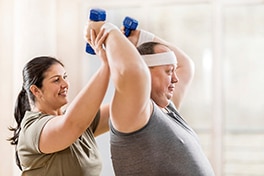
Proper form is very important when lifting weights. You may hurt yourself if you don’t lift weights properly. You may want to schedule a session with a certified fitness professional to learn which exercises to do and how to do them safely. Check with your health insurer about whether your health plan covers these services.
If you decide to buy a home gym, check how much weight it can support to make sure it is safe for you.
Mind and body exercise
Your local hospital or fitness, recreation, or community center may offer classes such as yoga, tai chi, or Pilates. You also may find some of these workouts online and can download them to a computer, smart phone, or other device. These types of activities may help you
- become stronger and more flexible
- feel more relaxed
- improve balance and posture
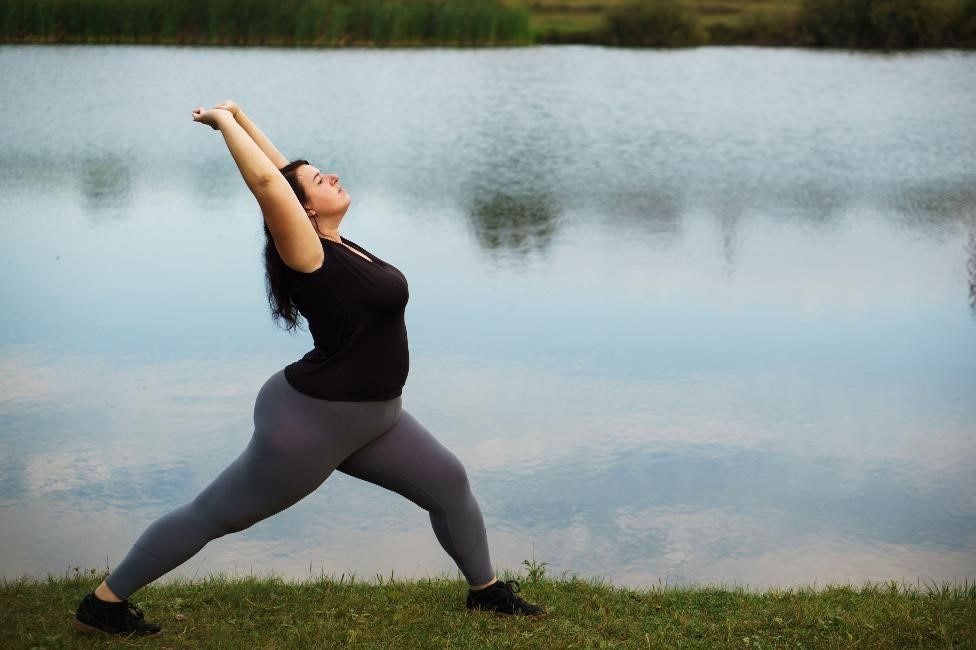
These classes also can be a lot of fun and add variety to your workout routine. If some movements are hard to do or you have injuries you are concerned about, talk with the instructor about how to adapt the exercises and poses to meet your needs—or start with a beginner’s class.
Daily life activities
Daily life activities, such as cleaning out the attic or washing the car, are great ways to get moving. Small changes can add more physical activity to your day and improve your health. Try these:
- Take 2- to 3-minute walking breaks at work several times a day, if possible.
- Stand, walk, or stretch in place during TV commercials.
- Take the stairs instead of the elevator or escalator whenever you can.
- Park farther from where you are going and walk the rest of the way.
Even a shopping trip can be exercise because it provides a chance to walk and carry your bags. Chores such as mowing the lawn, raking leaves, and gardening also count.
Where can I be active?
You can find many fun places to be active. Having more than one place may keep you from getting bored. Here are some options:
- Join or take a class at a local fitness, recreation, or community center.
- Enjoy the outdoors by taking a hike or going for a walk in a safe local park, neighborhood, or mall.
- Work out in the comfort of your own home with a workout video or by finding a fitness channel on your TV, tablet, or other mobile device.
How can I get past my roadblocks?
You most likely will face roadblocks that keep you from meeting your physical activity goals. Think about what keeps you from being active, then try to come up with creative ways to address those roadblocks. Here are a few examples to help you get started:
| Barrier | Solution |
|---|---|
| I don’t have enough time. | Instead of doing one long workout session, build in three 10-minute bursts of activity during your day, such as a brisk walk. Even standing up instead of sitting at your desk has benefits. |
| I just don’t like exercise. | Good news! You don’t have to run a marathon or go to the gym all the time to benefit from being active. To make physical activity more fun, try something you enjoy doing, such as dancing to the radio or taking a yoga class with friends. Many people find they start to like exercise better the more they do it. |
| I’m worried about my health or getting hurt. | If you have a hard time being active because of your health, talk with a health care professional first. A certified fitness professional can also guide you on how to be active safely. |
| I feel self-conscious working out in front of others. | Start being active at home until you feel more confident. Be active with friends who will support and encourage you. |
| (Add your barrier here.) | (Add your solution here.) |
| (Add your barrier here.) | (Add your solution here.) |
| (Add your barrier here.) | (Add your solution here.) |
How can I stick with my physical activity plan?
Sticking with a plan to be physically active can be a challenge. Online tools such as the NIH Body Weight Planner can help. The NIH Body Weight Planner lets you tailor your calorie and physical activity plans to reach your personal goals within a specific time period.
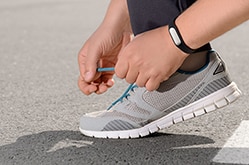
You also can download fitness apps that let you enter information to track your progress using a computer or smart phone or other mobile device.
Devices you can wear, such as pedometers and fitness trackers, may help you count steps, calories, and minutes of physical activity. Trackers can help you set goals and monitor progress. You wear most of these devices on your wrist like a watch, or clipped to your clothing.
Keeping an activity journal is another good way to help you stay motivated and on track to reach your fitness goals.
Set goals. As you track your activity, try to set specific short- and long-term goals. For example, instead of “I will be more active,” set a goal such as “I will take a walk after lunch at least 2 days a week.” Getting started with a doable goal is a good way to form a new habit. A short-term goal may be to walk 5 to 10 minutes, 5 days a week. A long-term goal may be to do at least 150 minutes of moderate-intensity physical activity a week.
Get support. Ask a family member or friend to be active with you. Your workout buddy can help make your activities more fun and can cheer you on and help you meet your goals.
Track progress. You may not feel as though you are making progress, but when you look back at where you started, you may be pleasantly surprised. Making regular activity part of your life is a big step. Start slowly and praise yourself for every goal you set and achieve.
Review your goals. Did you meet your goals? If not, why? Are they doable? Did you hit a roadblock trying to meet your goal? What will you do differently next week? Brainstorm some options to overcome future roadblocks. Ask a friend or family member to help support your goals.
Pick nonfood rewards. Whether your goal is to be active 15 minutes a day, to walk farther than you did last week, or simply to stay positive, recognizing your efforts is an important part of staying on track. Decide how you will reward yourself. Some ideas for rewards include getting new music to charge you up or buying new workout gear.
Be patient with yourself. Don’t get discouraged if you have setbacks from time to time. If you can’t achieve your goal the first time or can only stick to your goals for part of the week, remind yourself that this is all part of establishing new habits.
Look ahead. Try to focus on what you will do differently moving forward, rather than on what went wrong. Pat yourself on the back for trying.
Most importantly, don’t give up. Any movement, even for a short time, is a good thing. Each activity you add to your life is another step toward a healthier you.
Clinical Trials
The National Institute of Diabetes and Digestive and Kidney Diseases (NIDDK) and other components of the National Institutes of Health (NIH) conduct and support research into many diseases and conditions.
What are clinical trials, and are they right for you?
Clinical trials are part of clinical research and at the heart of all medical advances. Clinical trials look at new ways to prevent, detect, or treat disease. Researchers also use clinical trials to look at other aspects of care, such as improving the quality of life for people with chronic illnesses. Find out if clinical trials are right for you.
What clinical trials are open?
Clinical trials that are currently open and are recruiting can be viewed at ClinicalTrials.gov.
References
Additional Links
This content is provided as a service of the National Institute of Diabetes and Digestive and Kidney Diseases
(NIDDK), part of the National Institutes of Health. NIDDK translates and disseminates research findings to increase knowledge and understanding about health and disease among patients, health professionals, and the public. Content produced by NIDDK is carefully reviewed by NIDDK scientists and other experts.
The NIDDK would like to thank:
Richard Troiano, M.D., Captain, U.S. Public Health Service, U.S. Department of Health and Human Services
